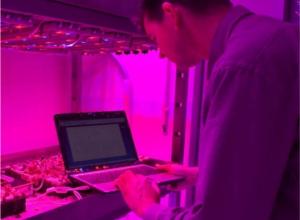Get ready for feed-the-world by numbers.
You’ve heard of paint by numbers? Get ready for feed-the-world by numbers.
Dutch agricultural company PlantLab wants to change almost everything you know about growing plants. Instead of outdoors, they want farms to be in skyscrapers, warehouses, or underground using hydroponics or other forms of controlled environments. Instead of sunlight they use red and blue LEDs. Water? They need just 10% of the traditional requirements. At every stage of their high tech process, PlantLab monitors thousands of details (163,830 reports per second!) with advanced sensors to create the perfect environment for each individual type of crop. In short, they create a high tech ‘plant paradise’. See it in action in the videos below, followed by plenty of pics of their tomatoes, cucumbers, peppers, etc. PlantLab’s revolutionary approach to agriculture may be able to leverage math and science to create a better food supply for the world’s escalating population. Fresher, local, more efficient…and they supposedly taste better too!
Urban agriculture isn’t new, and people have been talking about vertical farms (i.e. greenhouse skyscrapers) for decades. We’ve seen some cool examples of urban aquaculture (fish + plants) and a team from Singularity University was working on small scale urban farm boxes last year. What makes PlantLab different is the hardcore scientific and mathematical innovation they are bringing to the table. Screw bringing the farm into the city. These guys are reconsidering everything we know about planting crops. Why use white light? Plants don’t want the green spectrum, and many of the wavelengths just heat the leaves and evaporate water. Instead PlantLab gives their plants light from red and blue LEDs, changing the spectrum for each different plant! The same goes for CO2, and dozens of other factors. The results are plants grown in weird purple rooms, stacked in columns, that get bigger faster and with less resources than traditional indoor horticulture.









